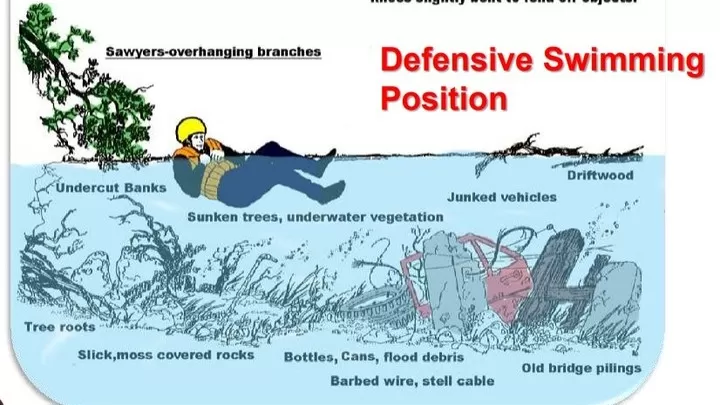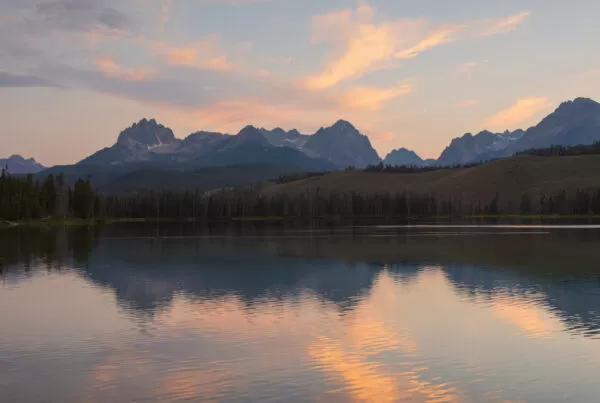Idaho has many special places to visit with your paddle vessel. Here are a few things you should know before going out on the Boise River, Whitewater Park, or one of the striking Idaho mountain lakes.

Attention Parents
Just a quick safety reminder that on Idaho
waters, kids 14 years of age and younger must wear
a life jacket on vessels 19’ or less (while underway).
( Stand up paddle-boards typically range from 9′ – 12′ )

Who needs an Invasive Species Sticker?
Idaho law requires the owner of any boat and any non-motorized vessel to buy and display an Idaho Invasive Species Fund sticker to legally launch and operate the boat in Idaho.
This includes:
- motor boats,
- jet boats,
- canoes,
- kayaks,
- rafts,
- drift boats
This does not include:
- inflatable, non-motorized vessels less than 10 feet long
( Stand up paddle-boards typically range from 9′ – 12′ )
Most paddle boards that are long enough for proper stability require an Invasive species sticker.
Defensive Swimming

Sometimes you might find yourself in a river approaching a rapid or whitewater feature without your board. Learn Defensive Swimming – On your back, feet up to avoid entrapment.
Safe Travel
To access many Idaho trails & lakes, dirt forest service road is required
Some service roads are accessible to many vehicles (weather/season conditions depending). Flash flooding is a year around hazard in Idaho. Any roadway is susceptible to wash out during these conditions. Please stay informed before branching out into the great Idaho wilderness.
It’s advised to travel in a vehicle with above-average clearance, power delivery to all 4 wheels, and well treaded tires. You never know what hazardous conditions may be found. BE PREPARED TO CAMP IN YOUR VEHICLE. BE PREPARED TO HIKE BACK TO A MAIN HIGHWAY. It’s recommended to bring extra survival provisions & cold weather clothes for any outing in Idaho (Even when sticking to paved roads). HAVE A PLAN. KNOW YOUR REIGON. Do you know which direction is north? Do you know a nearby place with cellphone service? How would you explain to an emergency responder, your current location? What if you had to hike out and call help for your friend/loved one? These are questions to consider when planning your next journey.
Driving on forest roads can be a rewarding and adventurous experience, but it also requires caution and preparation. Here are some good tips to keep in mind when driving on forest roads:
- Check road conditions: Before setting out, research the current road conditions and weather forecasts for the area you’ll be driving in. Some forest roads may be seasonal or subject to closures due to weather events or maintenance.
- Use a suitable vehicle: Ensure your vehicle is capable of handling rough terrain and has enough ground clearance. Four-wheel drive or all-wheel drive vehicles are often preferred for driving on uneven surfaces.
- Bring a map and GPS: Forest roads may not always be well-marked, and GPS signals can be weak in remote areas. Have a physical map and a GPS device or smartphone app to help navigate.
- Travel with a companion: If possible, drive with a companion or inform someone of your travel plans and expected return time. Cell service might not be available in some forest areas.
- Drive slowly and cautiously: Forest roads can be bumpy, narrow, and unpredictable. Drive at a safe and controlled speed, especially around blind corners or on uneven surfaces.
- Yield to oncoming traffic: Many forest roads are narrow, and encounters with other vehicles can be challenging. Be prepared to yield to oncoming traffic at pullouts or wider sections of the road.
- Watch for wildlife: Forested areas are home to various wildlife, so be vigilant for animals crossing the road, especially during dawn and dusk.
- Be prepared for emergencies: Carry essential supplies like water, food, a first aid kit, and tools for minor repairs. Also, make sure to have a spare tire and a jack in case of a flat.
- Respect private property and nature: Stick to designated forest roads and respect private property boundaries. Avoid damaging the environment and follow Leave No Trace principles.
- Inform authorities of hazards: If you encounter downed trees, large potholes, or other road hazards, report them to the local forest service or relevant authorities to help keep the roads safe for others.
By following these tips and exercising caution, you can have a safe and enjoyable experience driving on forest roads while appreciating the beauty of nature.
SUPs & Kayaks available to rent




